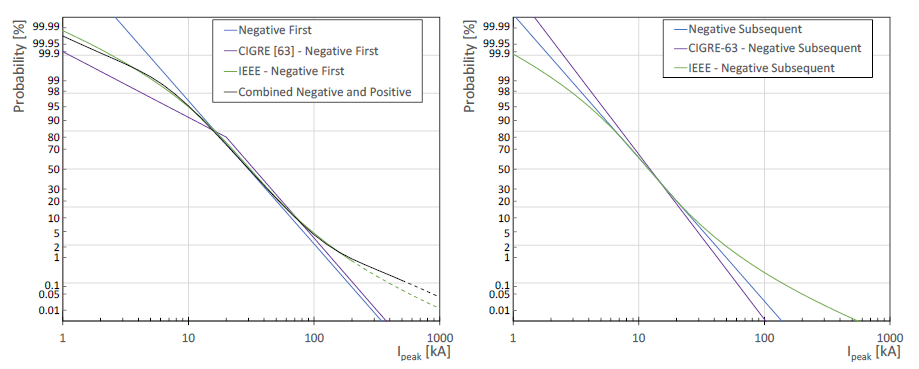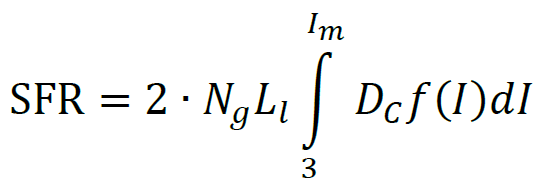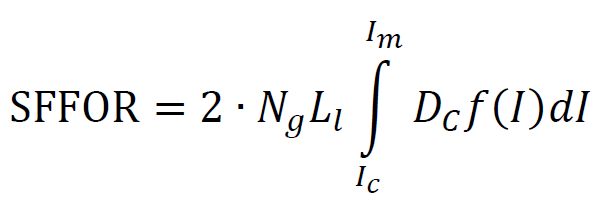How are phase wires shielded from lightning?
Transmission lines are typically equipped with shielding wires above the phase conductors. These shielding wires serve several purposes. One of them is to protect the phase wires from a direct lightning strike. The shielding wires act as collectors of the lightning flashes, preventing the flash to terminate on the phase conductors, causing overvoltages and the risk of insulator flashovers (with a short circuit current flowing as a result).
With some basic investments (e.g. the application of 1 shielding wire) a fair level of protection can be achieved. With some extra investment (e.g. more shielding wires or overhead ground wires) the protection can be improved. Unfortunately, perfect shielding under all circumstances is almost impossible to achieve. This means that at some point it may be uneconomical to take extra steps to shield the phase wires. Therefore, in practice it cannot be guaranteed that there will be no lightning strike reaching the phase conductors.
For this reason a design value is needed. The goal of a shielding study is to determine the amount of shielding wires and its location (relative to each other and the phase wires) so that only a specific number of flashes may result in a flashover. For example, the shielding failure flashover rate (SFFOR) can be 0.1 flashes per 100km per year.
What is the difference between shielding failure rate (SFR) and shielding failure flashover rate (SFFOR)?
Not every lightning flash that reaches the phase conductor will lead to a flashover of an insulator. For example, if a lightning of 3kA hits a phase wire that has a surge impedance of 400 Ohm, the voltage will be 1.5kA (because the current splits in two directions) x 400 Ohm = 600kV. Even if this voltage is superimposed on the system voltage, it will not be enough to result in a flashover for typical insulators that are used on transmission levels. Only for really short insulators (say 1m or less) a flashover will occur.
Such an event counts as a shielding failure, but will not lead to a flashover. This means that it will be a part of the shielding failure rate (SFR), but not the shielding failure flashover rate (SFFOR).
How do I know the probability of a lightning current amplitude occurence?
The following statistical distributions are often used and can be found in many different types of literature and documents.

It is best to apply lightning current parameters that are derived from direct measurements on grounded structures that resemble transmission line towers (including masts, chimneys. etc.). Currently there are only three datasets of lightning current measurements applicable that serve well for the application of transmission lines. They are the following:

How to calculate the shielding failure rate?
To determine the shielding failure rate, several methods can be applied as we explain in our online course. The most common method applied is the electro-geometric model (EGM). In this method, you will calculate the unprotected distance for a range of lightning current amplitudes, as shown in the video below.
The following formula is applied:

Where:
- Ng is the lightning flash density. This is the number of lightning strikes per unit time per unit area, typically expressed as 1 strike per square kilometer per year.
- L is the line length in kilometers. Together with the unprotected distance, this will result in an unprotected surface area.
- Dc is the unprotected distance for a specific lightning current value.
- f(I) is the probability that a lightning current occurs. Refer to the figures below for more information.
The value of 3kA acknowledges that there is a lower limit to take into account. The value for Im is the maximum penetration current, and shall be calculated, for example with the EGM. In the video example the value is 29.4kA.
And how to calculate the shielding failure flashover rate?

Other formula, where 3 is not set as a lower limit, but the critical current that leads to a flashover of the insulator. This can be calculated with the formula:

Where U50 is the critical flashover voltage of the insulator and Z is the surge impedance of the conductor.

